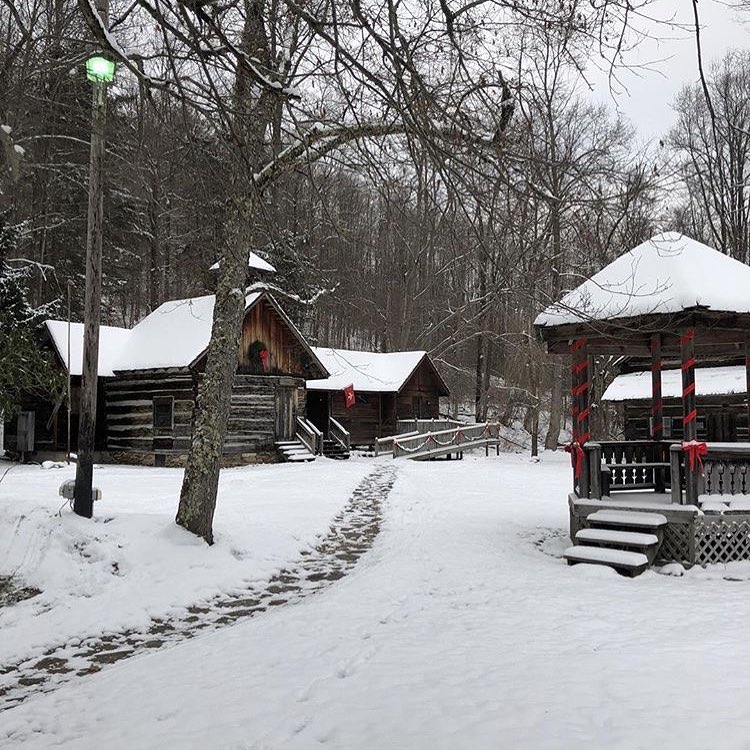Appalachian Christmas Traditions

Not all Christmas traditions are rooted in history. Some families start new traditions, such as hitting the slopes, pictures with Santa or seeing a movie on Christmas Eve. However, many Christmas traditions of Appalachia are based on those brought by early settlers.
The Christmas tradition of placing candles in the window is still common today. The original reason for placing candles in the window of the settlers was simply because they needed to see. It also let visitors know that the residents were awake and ready to welcome guests. Lighting candles in the window was not exclusive to the holiday season and there are many reasons why it was done. Although the candles are usually battery powered now, people still consider it an important Christmas tradition to place them in their windows.
Old Christmas or Old Christmas Day dates back to the late 1500’s when Pope Gregory XIII established the Gregorian calendar. Europe had followed the Julian calendar, which was roughly ten days behind the new Gregorian calendar. Some nations and churches refused to follow the new calendar and as a result Christmas, December 25th, was celebrated later, around January 5 or 6 of the Gregorian calendar. It took hundreds of years for the new calendar to be completely adopted. Roman Catholic nations such as France, Spain and Portugal switched to the new calendar the same year it was announced. Many Protestant nations resisted along with much of Orthodox eastern Europe. It was not until the 1700’s or later when more countries began to switch. England and Scotland officially adopted it in 1752, when many were emigrating to America and settling in Appalachia. Some settlers may not have known about the change and others refused to adopt it. Because of this, Old Christmas was the day they celebrated the holiday. By the 1800’s most people had adopted the Gregorian calendar and Old Christmas became a way to stretch out the holidays while others celebrated Old Christmas to carry on tradition. Old Christmas is recalled in various traditions such as the fiddle tune “Old Christmas Morning”.
Serenading, or caroling, stems from a more mischievous Christmas tradition. Serenaders would try to surprise their friends and neighbors by sneaking up and then singing or yelling, perhaps accompanied by fireworks or shooting. Serenaders would do so in the hopes of receiving a Christmas gift or treat. The surprise element of this tradition may not be as common today but caroling lives on. A resident of Helvetia, a town in Randolph County with Swiss and German roots, recalls memories of caroling as a child and then as an adult having the 4-H and other community members come to her house caroling. After going through the town today, the carolers gather at the Hütte restaurant to enjoy hot chocolate and homemade cookies. Other Christmas traditions Helvetia celebrates are the Feast of St. Nicholas and a candlelight Christmas Eve service where they sing “Silent Night” in German. A previous resident of Helvetia was the nephew of Franz Xaver Gruber, the organist who was the composer of the song. The Feast of St. Nicholas is an event organized by a local women’s group that involves crafts, games, stories, grittibänz (a Swiss bread shaped like a little person), a visit from Santa and is followed by a square dance.
Other Christmas traditions brought from those who settled or lived in Appalachia include bringing in the tree and mistletoe. The reasons behind some of these traditions boils down to convenience. For example, tree farms and artificial trees weren’t options for early residents of Appalachia. They simply went outside and choose a tree from what was available around them. An Elkins resident recalls how her grandfather would bring their Christmas tree home. He worked for a railroad company. While out working along the tracks, he and other workers would find trees to cut, then load them onto the train to bring home for their families. Natural decorations were gathered such as pinecones and mistletoe. Mistletoe is a common decoration for people in and outside of Appalachia, but it was popular here because it was easy to find. The tradition of kissing beneath mistletoe has various histories but did not originate in Appalachia.
The Scottish settlers brought with them fruitcake, also known as scotch whiskey cake, and the British brought mincemeat pie. Other foods such as biscuits, steamed vegetables and cured country ham were daily staples embellished for the holidays and common in a traditional Christmas dinner. Another food tradition around Christmas is the making of Rosettes, a light, crispy, deep-fried pastry.
What are your Christmas traditions or favorite holiday memories? Leave a comment!
Photo taken by @jerianne.brown
